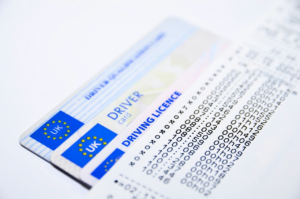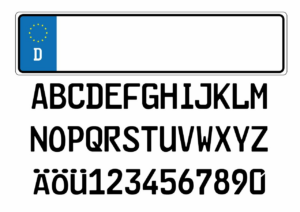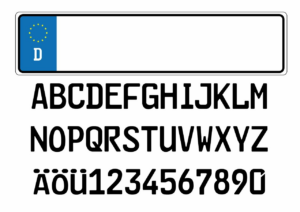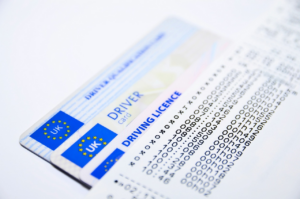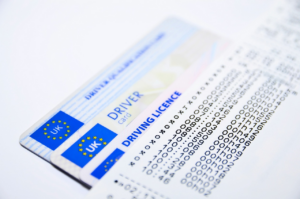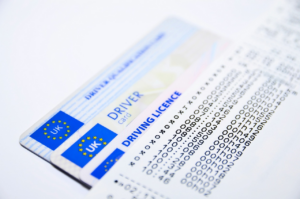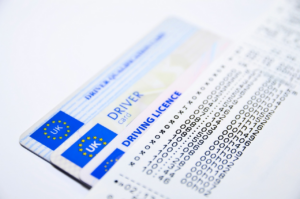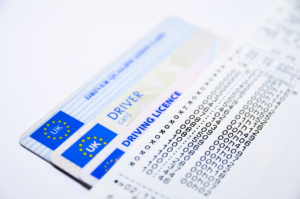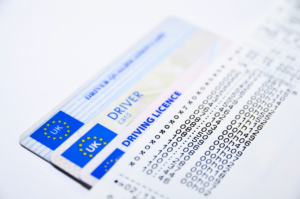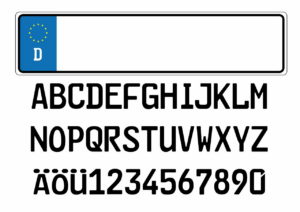Are you planning a trip to Australia and wondering if your international driving permit will suffice? The answer is yes, you can drive in Australia with an international driving permit (IDP) as long as you meet certain requirements.
Driving in Australia can be a thrilling experience, but it’s important to understand the legal and safety requirements before hitting the road. An IDP is a document that allows you to drive in a foreign country without needing to apply for a local driver’s license. It’s essentially a translation of your driver’s license in multiple languages, making it easier for authorities to understand your driving privileges.
However, not all countries recognize IDPs, so it’s important to check if Australia accepts them before traveling. In this article, we’ll go over the legal requirements, language proficiency, and road rules you need to know before driving in Australia with an IDP.
Overview of International Driving Permits
Get ready to hit the road abroad with the lowdown on obtaining an International Driving Permit (IDP)!
An IDP is a document that allows you to drive in most countries around the world, including Australia. It’s essentially a translation of your driver’s license into several different languages, making it easier for foreign officials to understand your credentials.
To obtain an IDP, you’ll need to visit your local automobile association or motor vehicle administration. You’ll need to bring your valid driver’s license, two passport-sized photos, and a completed application form.
The cost of the IDP varies by country, but it’s usually around $20-$30 USD. Keep in mind that an IDP is only valid for one year, so if you plan on staying abroad for longer than that, you’ll need to renew your IDP or get a local driver’s license.
With an IDP in hand, you’ll be able to hit the open road and explore all that Australia has to offer!
Legal Requirements for Driving in Australia
When driving in Australia, there are certain legal requirements that you need to be aware of.
Firstly, make sure that your international driving permit is valid in Australia.
Secondly, there are age restrictions for driving certain types of vehicles, so you need to know what they are.
Lastly, always carry your driver’s license, passport, and other necessary documents with you while driving in Australia.
Validity of international driving permits
The permit you’ve obtained from your home country may not be recognized in Australia, so it’s important to check its validity.
Here are three things to keep in mind when doing so:
- Make sure your permit is current and hasn’t expired.
- Check if your home country’s license is recognized in Australia. If not, apply for a temporary Australian driving license before you leave.
- Familiarize yourself with Australian road rules to ensure a safe and enjoyable driving experience.
Australia drives on the left-hand side of the road, and speed limits are in kilometers per hour.
Age restrictions
Age restrictions may affect your ability to legally operate a vehicle in certain areas of Australia. The minimum age requirement for driving varies depending on the state or territory you are in. Generally, most states require you to be at least 16 years old to obtain a learner’s permit, which allows you to drive under the supervision of a licensed driver. However, some states like Victoria and the Northern Territory require you to be at least 18 years old to obtain a learner’s permit.
To give you a better understanding of the minimum driving age requirements in Australia, here’s a table that shows the minimum age for obtaining a learner’s permit and a driver’s license in each state and territory:
| State/Territory | Learner’s Permit | Driver’s License |
|---|---|---|
| New South Wales | 16 | 17 |
| Victoria | 18 | 18 |
| Queensland | 16 | 17 |
| Western Australia | 16 | 17 |
| South Australia | 16 | 17 |
| Tasmania | 16 | 17 |
| Northern Territory | 18 | 17 |
| Australian Capital Territory | 15 years and 9 months | 17 |
It’s important to note that even if you have an international driving permit, you still need to comply with the age requirements of the state or territory you are driving in. Failure to do so may result in fines or legal consequences. Make sure to check the age requirements before driving in Australia, and always carry your valid driver’s license and international driving permit with you when operating a vehicle.
What to carry with you while driving
Make sure to always have your valid driver’s license and other necessary documents with you while on the road to ensure a smooth and enjoyable driving experience in Australia. Apart from your international driving permit, you must carry your passport and visa if you’re a tourist or temporary resident. If you’re a permanent resident of Australia, you can use your Australian driver’s license.
It’s a good idea to carry your car rental agreement, insurance policy, and registration papers in addition to your license and identification documents. These documents will come in handy if you’re pulled over by the authorities or involved in an accident. You may also need to show them when entering a national park or a restricted area.
Always check the specific requirements before embarking on a road trip to avoid any inconvenience or delay.
Language Requirements
If you’re not fluent in English, you might want to brush up on your language skills before hitting the road in Australia. This is because road signs, driving directions, and communication with police officers and other drivers are all in English.
While some signs may have pictures or symbols to convey meaning, it’s important to be able to read and understand written instructions as well. Additionally, if you need to ask for directions or communicate with emergency services, it will be much easier if you can speak and understand English.
Furthermore, if you’re planning on staying in Australia for an extended period of time and want to apply for a driver’s license, you will need to pass a written and practical driving test in English. The test assesses your knowledge of road rules and ability to safely operate a vehicle.
So, it’s not just important for driving on the road, but also for obtaining a license and being legally allowed to drive in Australia. Overall, having a good grasp of the English language will make your driving experience in Australia much smoother and safer.
Understanding Australia’s Road Rules
To understand how to navigate the roads of Australia, it’s important to have a grasp on the country’s road rules. Australia follows left-hand traffic, meaning that drivers stay on the left side of the road and the steering wheel is on the right-hand side of the car. This may take some getting used to for drivers from countries that follow right-hand traffic.
Additionally, it’s important to note that speed limits are strictly enforced in Australia, with fines and demerit points given to those who exceed them. The speed limits vary depending on the type of road and location, so it’s important to pay attention to the signs.
Another important rule to keep in mind is the use of seatbelts, which is mandatory for all passengers in the car. It’s also illegal to use a mobile phone while driving, even if it’s hands-free.
Drivers should also be aware of the strict laws around drinking and driving, with a blood alcohol limit of 0.05%. It’s highly recommended to avoid any alcohol if you plan on driving.
Finally, it’s important to be aware of the wildlife that may cross the roads, particularly in rural areas. Kangaroos, for example, are known to jump out onto the road unexpectedly, so it’s important to stay alert and drive cautiously.
Safe Driving Practices
When driving in Australia, it’s important to be aware of the speed limits on different roads and to adhere to them at all times.
You must also ensure that you and your passengers are wearing seatbelts, as failure to do so can result in fines and penalties.
Additionally, it’s illegal to drive under the influence of drugs or alcohol, so always ensure that you’re sober before getting behind the wheel.
Speed limits
Observing the designated speed limits is crucial when traveling on Australian roads. The speed limit varies depending on the type of road you’re traveling on.
In urban areas, the maximum speed limit is usually 50 km/h, while on highways and major roads outside urban areas, it can go up to 100 km/h or even higher in some areas.
It’s important to always pay attention to road signs indicating the speed limit and adjust your speed accordingly. Exceeding the speed limit not only puts you at risk of receiving a fine but also increases the likelihood of accidents.
Remember, driving too fast reduces your ability to react to unexpected situations and increases the distance it takes to stop your vehicle. So, always observe the speed limits and keep yourself and others on the road safe.
Seatbelt and child restraint laws
Make sure you and your passengers are buckled up properly and children are secured in appropriate child restraints to ensure a safe and comfortable journey on Australian roads.
Seatbelt and child restraint laws are strictly enforced in Australia, and failure to comply with these laws can result in fines and demerit points. All drivers and passengers in a vehicle must wear a seatbelt, and children must be safely restrained in a child restraint appropriate for their age and size.
Children under the age of six must be secured in an approved child restraint that’s properly fitted and adjusted. Children aged between six months and four years must be secured in a rear-facing or forward-facing child restraint with an inbuilt harness.
Children aged between four and seven years must be secured in an approved forward-facing child restraint with an inbuilt harness or an approved booster seat. Children aged between seven and 16 years must wear a seatbelt or be secured in an approved booster seat if they’re too small for a seatbelt.
By following these laws, you can ensure the safety of yourself, your passengers, and other road users while driving in Australia.
Driving under the influence
Now that you know all about seatbelt and child restraint laws in Australia, it’s time to talk about a serious offense that could potentially put you and others in danger: driving under the influence.
In Australia, it’s illegal to drive with a blood alcohol concentration (BAC) of 0.05 or higher. This law applies to both residents and visitors with a valid driver’s license, including an international driving permit.
If you’re caught driving under the influence, you could face severe consequences, including fines, license suspension, and even jail time. Not only that, but your actions could have devastating consequences for yourself and others on the road.
It’s important to remember that driving is a privilege, not a right, and with that privilege comes responsibility.
To avoid any potential issues, it’s always best to err on the side of caution and avoid driving after consuming alcohol. If you do plan on drinking, make sure to have a designated driver or use public transportation to get around.
Remember, the safety of yourself and others on the road should always be your top priority.
Insurance Requirements
If you plan on renting a car in Australia, it’s important to know the insurance requirements before hitting the road. Here are three key things to keep in mind:
-
Third Party Liability Insurance: This is mandatory in Australia and covers any damage caused by your vehicle to other people’s property or injuries sustained by other people in an accident.
-
Collision Damage Waiver: Also known as CDW, this is an optional insurance that covers the cost of repairs or replacement of the rental vehicle if it’s damaged or stolen. Note that CDW usually comes with an excess, which means you’ll have to pay a certain amount towards the cost of repairs if you make a claim.
-
Personal Accident Insurance: This is an optional insurance that covers medical expenses and loss of income in case of personal injury sustained in an accident. If you’re travelling with a group, it’s worth checking if your travel insurance already covers this to avoid duplicating coverage.
Make sure you read the fine print of your rental agreement and understand what’s covered and what’s not before signing up for any insurance. Keep in mind that some credit cards also offer rental car insurance, so it’s worth checking with your credit card provider if you’re covered.
Rental Car Considerations
As you explore the vast and beautiful landscapes of Australia, it’s essential to consider various factors when renting a car to ensure a smooth and stress-free journey.
When renting a car in Australia, be sure to check the rental company’s policies on international driving permits. Some rental companies may require an international driving permit, while others may accept your foreign driver’s license.
Another consideration when renting a car in Australia is the type of vehicle you need. If you plan on driving on unpaved roads or off-road trails, you may want to consider renting a four-wheel-drive vehicle. Additionally, if you’re traveling with a group of people or you have a lot of luggage, you may want to rent a larger vehicle, such as a van or SUV.
It’s also important to consider the rental company’s policies on insurance and fuel. Be sure to read the rental agreement carefully and ask any questions you may have before signing on the dotted line.
Conclusion and Final Tips
Now that you’ve learned about rental car considerations and whether or not you can drive in Australia with an international driving permit, let’s recap some important information and provide additional resources for safe driving in Australia.
It’s always important to familiarize yourself with the rules of the road in a new country, especially when it comes to driving. Some key things to remember include driving on the left side of the road, understanding speed limits and roundabout rules, and avoiding distractions while driving.
To ensure a safe and enjoyable driving experience in Australia, be sure to check out resources such as the Australian Road Rules and the Drive Safe Handbook.
Recap of important information
Take a moment to review these crucial details so you can hit the road with confidence. If you’re planning to drive in Australia with an international driving permit, make sure to bring your original license as well. Your IDP is only a translation of your license and can’t be used on its own.
Additionally, remember that each state and territory in Australia may have different driving rules and regulations. Take the time to research the specific requirements for the areas you plan to visit. This can include speed limits, road signs, and even which side of the road to drive on.
By being aware of these details, you can ensure a safe and enjoyable driving experience in Australia.
Additional resources for safe driving in Australia
Get ready to hit the road with confidence by checking out these extra resources to ensure a safe and enjoyable driving experience down under.
First and foremost, it’s important to familiarize yourself with the local road rules and regulations. In Australia, vehicles drive on the left-hand side of the road, and speed limits are measured in kilometers per hour. Additionally, it’s mandatory to wear seatbelts at all times and to avoid using mobile phones while driving.
Another important resource to consider is the availability of GPS devices or maps to help navigate unfamiliar territory. It’s also a good idea to plan your route ahead of time and take breaks every few hours to avoid fatigue.
Finally, be aware of potential hazards such as wildlife crossing the road, especially in rural areas, and always drive defensively and within the speed limit. By following these tips and utilizing additional resources, you can ensure a safe and enjoyable driving experience in Australia.
Frequently Asked Questions
How long is an International Driving Permit valid for in Australia?
If you’re planning on driving in Australia with an international driving permit, it’s important to know how long the permit is valid for.
In Australia, an international driving permit is valid for up to 12 months from the date of issue.
However, it’s important to note that you must also carry your original driver’s license from your home country while driving in Australia.
Additionally, it’s always a good idea to familiarize yourself with the local driving laws and regulations before hitting the road. This will ensure that you have a safe and enjoyable driving experience in Australia.
Can you use an International Driving Permit as the sole form of identification when driving in Australia?
When driving in Australia, you can’t use an international driving permit as the sole form of identification. An international driving permit is a helpful addition to your driver’s license, but it can’t replace it entirely. The Australian government requires all drivers to carry their original driver’s license at all times while driving. If you’re caught driving without your license, you may face fines or other penalties.
Therefore, it’s important to remember to bring your driver’s license and international driving permit with you when driving in Australia.
Is it necessary to have an International Driving Permit if you have a valid driver’s license from your home country?
If you have a valid driver’s license from your home country, it’s not necessary to obtain an international driving permit (IDP) to drive in Australia. However, it’s highly recommended to carry one with you as it serves as a translation of your license into various languages and can be useful in case of language barriers or any legal issues.
Additionally, some rental car companies may require an IDP along with your license to rent a car. It’s important to note that an IDP doesn’t replace your driver’s license and you must always carry both documents while driving in Australia.
Are there any age restrictions for obtaining an International Driving Permit in Australia?
If you’re planning on driving in Australia with an international driving permit, it’s important to know the age restrictions for obtaining one. In Australia, you must be at least 18 years old to apply for an international driving permit.
It’s also important to note that an international driving permit is not a replacement for a valid driver’s license from your home country. While it may be helpful to have one, it’s not always necessary.
However, if you do choose to obtain an international driving permit, make sure you meet the age requirements and have all the necessary documentation before applying.
Are there any specific road signs or traffic rules in Australia that are unique or different from other countries?
When driving in Australia, there are a few unique road signs and traffic rules that you should be aware of.
For example, in Australia, you drive on the left-hand side of the road, and you must give way to traffic on your right at intersections.
Additionally, there are some unusual road signs to look out for, such as the kangaroo crossing sign, which warns drivers of the possibility of kangaroos hopping across the road.
It’s also important to remember that the speed limit is in kilometers per hour, not miles per hour, and that there are strict laws regarding drink driving and mobile phone use while driving.
So, if you plan on driving in Australia, it’s essential to familiarize yourself with these unique road signs and traffic rules to ensure a safe and enjoyable driving experience.
Conclusion
So, can you drive in Australia with an international driving permit? Yes, but there are some important things to keep in mind before hitting the road.
Make sure you have a valid IDP, familiarize yourself with Australia’s road rules, and adhere to safe driving practices. Additionally, be aware of language requirements and insurance needs, especially if you plan on renting a car.
It’s important to remember that driving in a foreign country can be a bit overwhelming, but with the right preparation and mindset, it can also be a wonderful experience.
Take the time to research and plan ahead, and don’t hesitate to ask for help or guidance along the way. By following these tips and guidelines, you can enjoy a safe and enjoyable driving experience in Australia.


